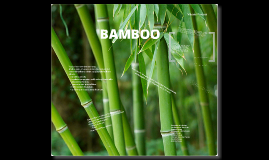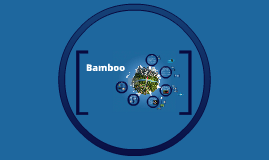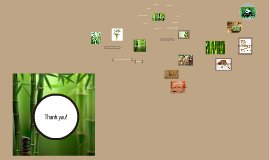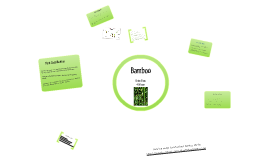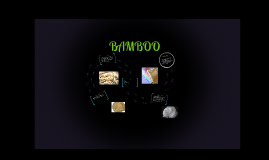Bamboo
Transcript: Nike Woven Saturday Jacket Bamboo / Sail Fun Fact: Nature's Purest Small Knitted Bamboo Blanket History Traditional Uses for Bamboo: The resultant fluff is very long in staple and visibly finer than other fibres. Then they are spun into yarn, like any other textile fibre. The longer staple and higher tensile strength is what makes a tough, soft yarn – which is not as susceptible to wearing and fraying as many other yarns. 66%Rayon made from bamboo fibers, 28%Tencel,6%Spandex When harvested they are taken to mills where they are crushed and submersed in a strong solution of sodium hydroxide which dissolves the bamboo cellulose. With the addition of carbon disulfide it renders the mix ready to regenerate fibres which are then drawn off, washed and bleached to a bright white colour and dried. Naturally more wrinkle resistant than cotton, ironing not always required. Environmental impact Bamboo Short Sleeve Thermal Top - Ivory Fun Bamboo Fact: PARLEE 70% Bamboo Viscose, 20% Organic Cotton, 10% Spandex Methods of creating a bamboo Yarn/ Cordage: Particularly absorbent and breathable In China and Japan, thin strips of bamboo were woven together into hats and shoes. One particular design of bamboo hats was associated with rural life, being worn almost universally by farmers and fishermen in order to protect their heads from the sun. There are over 1500 species of bamboo worldwide, but only about 50 are commercially involved in trade (Hunter 2003). Fashion The bamboo plant supports an international trade worth over 2.5 billion USD there are also over 2.5 billion people (38% of world population) involved in its trade or use. In 2003, the bamboo forest area was around 22 million ha, and it has been increasing at a speed of 3% per year; China hosts a bamboo forest area of 7.2 million ha. Bamboo Leggings Toxic chemicals -fertilizers and pesticides in agriculture -manufacturing stages such as fibre extraction, pre- treatment, dyeing, printing Waste volumes -non-biodegradable wastes to landfill -large quantities of wastes because of fast fashion Nike Dunk High Pro SB Canvas Urban Orange - Bamboo - White Contribution to climate change -burning fossil fuels for electricity needed in manufacturing, agricultural machinery, laundering (electricity and heating water) Properties Fun Fact Bamboo has served as an important crop for centuries. It is known as the friend of the peoplein China, the wood of the poor in India, and the brother in Vietnam (Farrelly 1984). Bamboo was originally used as thatching for housing and other industrial uses in the home. However the first western use of bamboo as a textile was recorded in 1864, developed by Philipp Lichtenstadt for items such as cordage, cloth, mats and pulp for paper. In terms of clothing, it was only used for structural elements such as, bustles and corsets. When you consider it, bamboo is a very logical choice of fibre for many items of clothing. As well as having excellent strength, shape stability, washability, colorfastness, shrink fastness and being exceptionally comfortable against the skin, bamboo fibre also boasts the following: Bamboo is a Natural Fiber derived from the bamboo plant which is a member of the grass family. Being a plant fiber means it is a cellulose fibre. Space consumption -large fields for harvest can take away space needed for food production Bamboo •Bamboo is native to every continent except Antarctica and Europe (where it has been introduced); it endures both rich and poor soils, temperatures varying from -20°C to 47°C, as well as rainfall ranging from 76.2 cm to 635 cm per year (Farrelly 1984). Bamboo textile fibre is made from bamboo timber which has matured in the forest for at least 4 years. Traditional bamboo use: Very durable, can be chucked in the washing machine. Cheaper than cashmere and silk. Naturally bacteria inhibiting An 1881 bustle design. In the West, bamboo, alongside other components such as whalebone and steel wire, was sometimes used as a structural component in corsets, bustles and other types of structural elements used in fashionable women's dresses. Since the bamboo is naturally hollow in the horizontal cross section, the fibre shows abundant gaps. These gaps can absorb and evaporate human skin moisture just as the bamboo plant absorbs and evaporates moisture in the ecosystem. It has lovely Drape Black Thermal Bottom Other Bamboo Products Bamboo yields 50 times as much fibre per acre as cotton. No more smelly feet – ever No more unpleasant body odour. Bamboo has always been grown without the use of pesticides. It is rarely attacked by any pests and not susceptible to diseases. The reason for this, Japanese scientists have found, is a unique anti-bacterial agent of bamboo named “bamboo kun”. This substance, combined with the tight molecular structure of bamboo fibres, are believed to give it its anti-bacterial and bacteriostatic properties – which is not diminished even after more than 50 washes! Bamboo is the fastest growing






